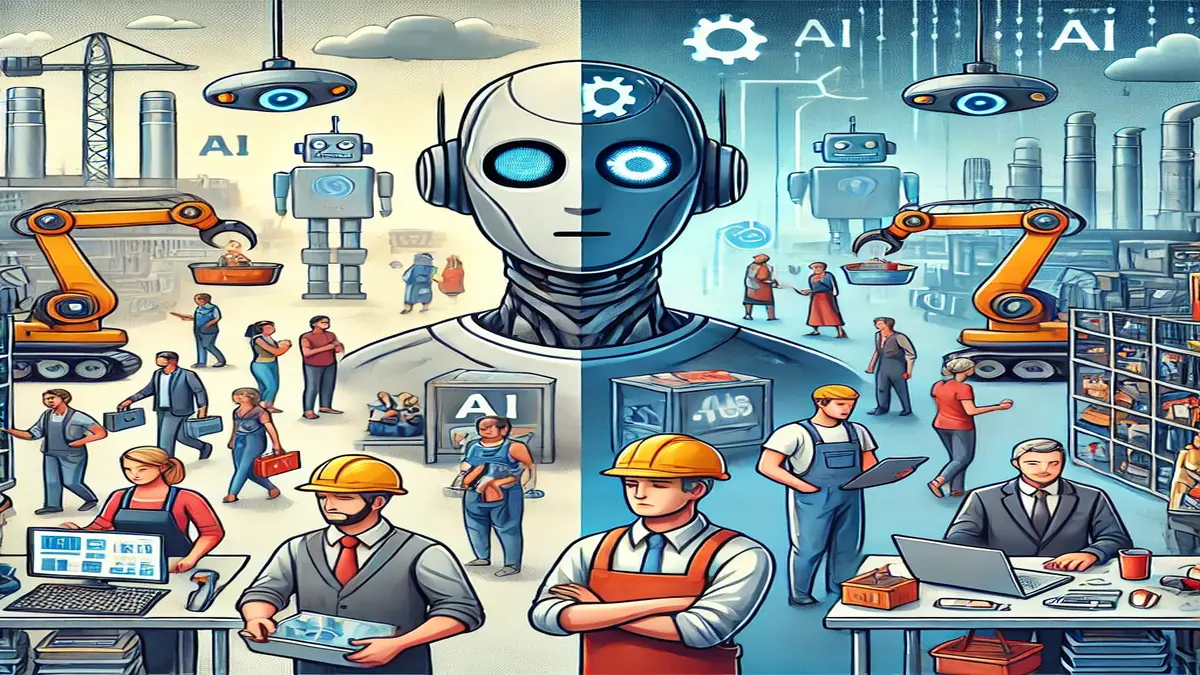Artificial Intelligence (AI) is no longer confined to the realm of science fiction it’s real, it’s rapidly advancing, and it’s reshaping the way we work. From automating routine tasks to taking over entire job roles, AI is redefining the employment landscape. As some jobs disappear, others will evolve or emerge altogether. In this shifting environment, one can’t help but consider how other transformative technologies like the future of cryptocurrency are also playing a role in redefining economies and job markets. So, what does this mean for today’s workers?
AI and Jobs: A Double-Edged Sword
AI is shaking up industries, but it’s not all doom and gloom. While it does eliminate certain jobs, it also creates opportunities. The real challenge is how fast businesses and workers can adapt.
Who’s at Risk? Jobs Most Likely to Be Automated
Not all jobs face the same level of risk. Workforce automation hits hardest in roles that rely on repetitive, predictable tasks. If a job involves structured data, routine decision-making, or physical labor in controlled environments, AI and robotics are ready to step in.
Jobs at High Risk:
Manufacturing & Warehouse Work – Robots already handle assembly lines, packaging, and inventory management. Amazon’s robotic warehouses are a prime example.
Customer Support & Telemarketing – AI chatbots and voice assistants can answer basic customer queries, book appointments, and even resolve complaints.
Data Entry & Processing – AI can extract, analyze, and categorize data faster and with fewer errors than humans.
Retail Cashiers – Self-checkout kiosks and AI-powered stores (like Amazon Go) eliminate the need for human cashiers.
Who’s Safe? Jobs AI Can’t Easily Replace
AI may be smart, but it lacks creativity, emotional intelligence, and complex problem-solving skills. Jobs that require these traits are harder to automate. Creative Professions – Writers, designers, artists, and marketers rely on originality and human emotions—things AI struggles with.
Healthcare & Social Work – AI can assist in diagnosing diseases, but doctors, nurses, and therapists require empathy and human interaction.
Skilled Trades – Electricians, plumbers, and carpenters deal with unpredictable physical tasks that robots can’t yet handle efficiently.
Education & Training – AI can supplement learning, but teachers provide personal guidance and mentorship that machines can’t replicate.
Employment Trends: The AI-Driven Job Shift
While AI eliminates certain jobs, it also creates new roles that didn’t exist a decade ago. Employment trends show that businesses need more workers skilled in AI development, cybersecurity, and data science.
Growing AI-Powered Jobs:
AI Specialists & Data Scientists – Companies need experts to develop, train, and manage AI systems.
Cybersecurity Analysts – With AI-driven cyber threats on the rise, businesses need stronger security measures.
Robot Maintenance & Automation Engineers – Someone has to build, program, and maintain the robots replacing human workers.
AI Ethics & Policy Experts – Governments and businesses need specialists to navigate the ethical dilemmas AI presents.
How Workers Can Adapt to Workforce Automation
Change is inevitable, but losing your job to a robot doesn’t have to be. The key is reskilling and upskilling—learning new skills that align with emerging job markets.
How to Stay Relevant:
Learning Digital Skills – Coding, data analytics, and AI literacy are valuable in nearly every industry.
Improve Soft Skills – Critical thinking, communication, and emotional intelligence will always be in demand.
Embrace Lifelong Learning – Online courses, certifications, and workshops can keep workers ahead of automation trends.
Final Thoughts:
AI Won’t Take All Jobs—But It Will Change Them
AI isn’t the enemy, but ignoring its impact could be a career killer. Workforce automation is reshaping industries, and the smartest move is to adapt, reskill, and evolve. Some jobs will disappear, new ones will arise, and those willing to learn will thrive in the AI-driven economy.
The future isn’t about humans versus AI—it’s about humans working with AI. Are you ready?





